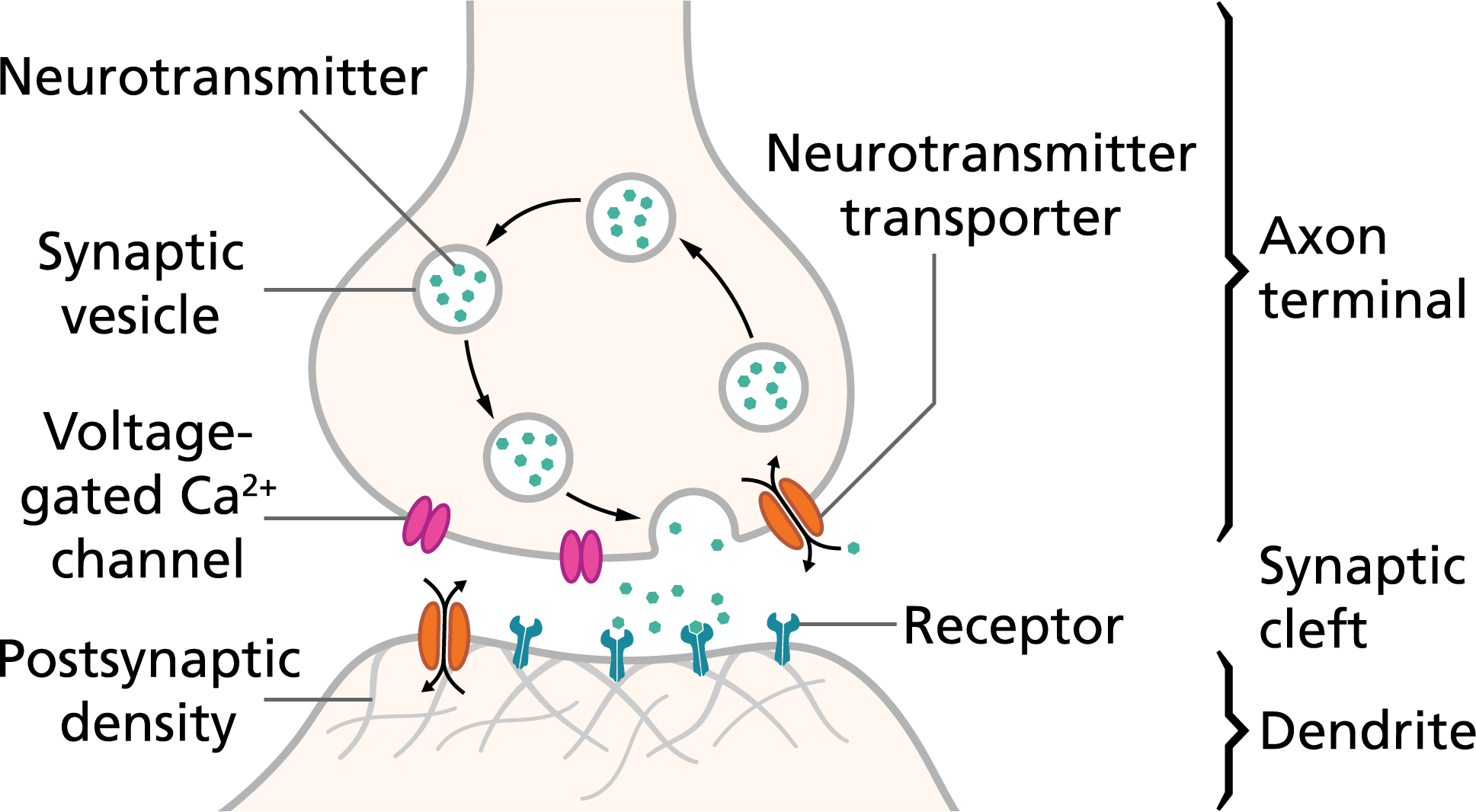- Synapse is the close proximity of the axon of one neuron and the dendrites or cyton of another neuron with a gap of just about 200A0. (1A0 =10 -10m).
- In other words, it is a junction between two successive neurons where the nerve impulse from the axon of one neuron gets transmitted to the dendrite of the next neuron with the help of chemical substance called neurotransmitters.
- The term synapse was first used by Sir Charles Sherrington (1857-1952), a British physiologist, for a neuron-neuron contact.
- In a synapse, the transmitting cell is called the presynaptic cell, and the receiving cell is termed as postsynaptic cell.
- A narrow gap, called synaptic cleft, separates the presynaptic cell from the postsynaptic cell.
- Hence, an action potential occurring in the membrane of the presynaptic cell cannot be directly transmitted to the membrane of the postsynaptic cell.
- A synapse between an axon of a motor neuron and a muscle fiber is called neuro-muscular junction.
- A synapse between an axon of a motor neuron and a glandular cell is termed as neuro-glandular junction.
- A synapse between a sensory neuron and a sensory receptor is known as neuro-receptor junction.
- Structure of these junctions and the transmission of nerve impulse across them is similar to those of neuron-neuron synapse.
Mechanism of transmission of nerve impulse at a synapse:
Above is an explanation about the synapse and the transmission of synapse, below is the description of the effects of drugs and toxins on synaptic transmissions. Most drugs that affect the nervous system do so by influencing the transmission of nerve impulses across synapse. Drugs may affect the release of the neuron transmitter; others modify. The correct answer is (c). 'The transmission of the nerve impulse across a synapse is accomplished by the release of a neurotransmitter by an. See full answer below. A nerve impulse is passed from one nerve cell to the other through the synapse, however, a single impulse does not always get across the synapse. It may take two or three impulses getting here in quick succession or maybe all at once from two or more fibers to start an impulse in the next neuron. The synapse is an empty space present between two or more neurons. For the transmission of nerve impulses across the synapse,a chemical,neurotransmittor is used.
1. When an impulse arrives at a synaptic knob of the axon, it depolarizes the presynaptic membrane and increases its permeability to calcium ions (Ca++).

2. Ca++ ions from the synaptic cleft pass into the synaptic knob via voltage- gated channels.Sudden rise in the cytosolic concentration of Ca++, causes small synaptic vesicles present there to secrete chemical substances called neurotransmitters and release into the synaptic cleft by exocytosis through the presynaptic membrane. A common neurotransmitter is Acetylcholine.
3. Acetylcholine diffuses across the synaptic cleft and attaches to special protein molecules that act as the acetylcholine receptors and are present on the ion channels in the membrane of the dendrite of the next neuron. The dendrite membrane at the synapse is thickened also called postsynaptic membrane.

How Does A Synapse Transmit A Nerve Impulse

4. The combination of the neurotransmitter with its receptors opens channels to let the ionic flow through the channels. The Na+ ions enter and K+ ions leave the dendrite down their concentration gradients. This causes the depolarization of the postsynaptic membrane and initiates a new action potential.
5. The new action potential passes as a wave (nerve impulse) along the new neuron.
6. The neurotransmitter, acetylcholine is inactivated by an enzyme, acetylcholinesterase, present in the postsynaptic (dendrite) membrane as well as in the synaptic cleft. The enzyme splits acetylcholine by hydrolysis into its components, acetic acid and choline. This allows the membrane to repolarize. The constituents of acetylcholine are inactive and thus stimulation of the dendrite is avoided.
7. The constituents return by diffusion to the axon where these are recombined into acetylcholine with the help of necessary synthesizing enzymes.
- The synapse, thus, cannot transmit an impulse in the reverse direction as the dendrite cannot secrete acetylcholine or any other chemical transmitter.
Nerve Impulse Pathway
Transmission of Nerve Impulse at a Synapse
